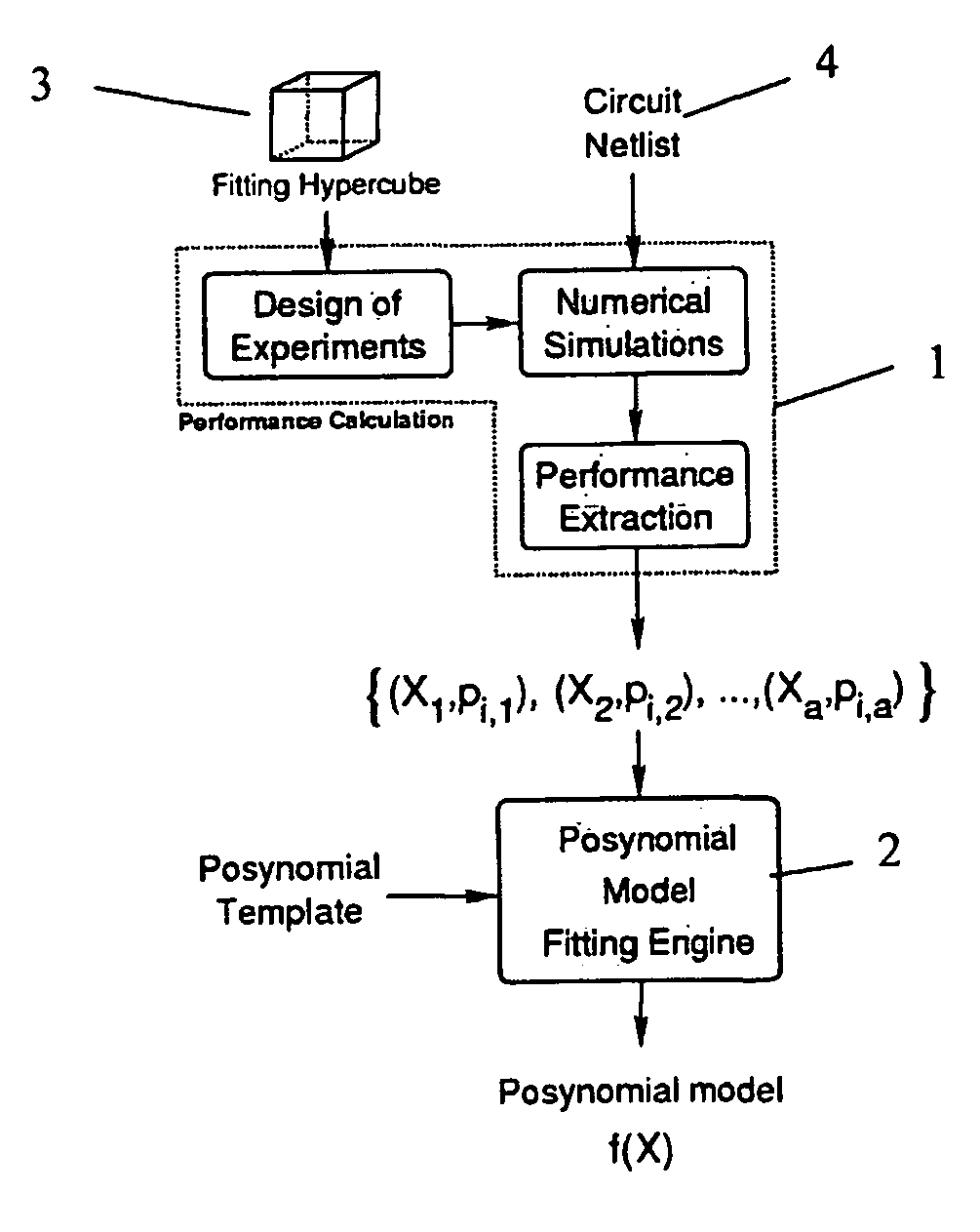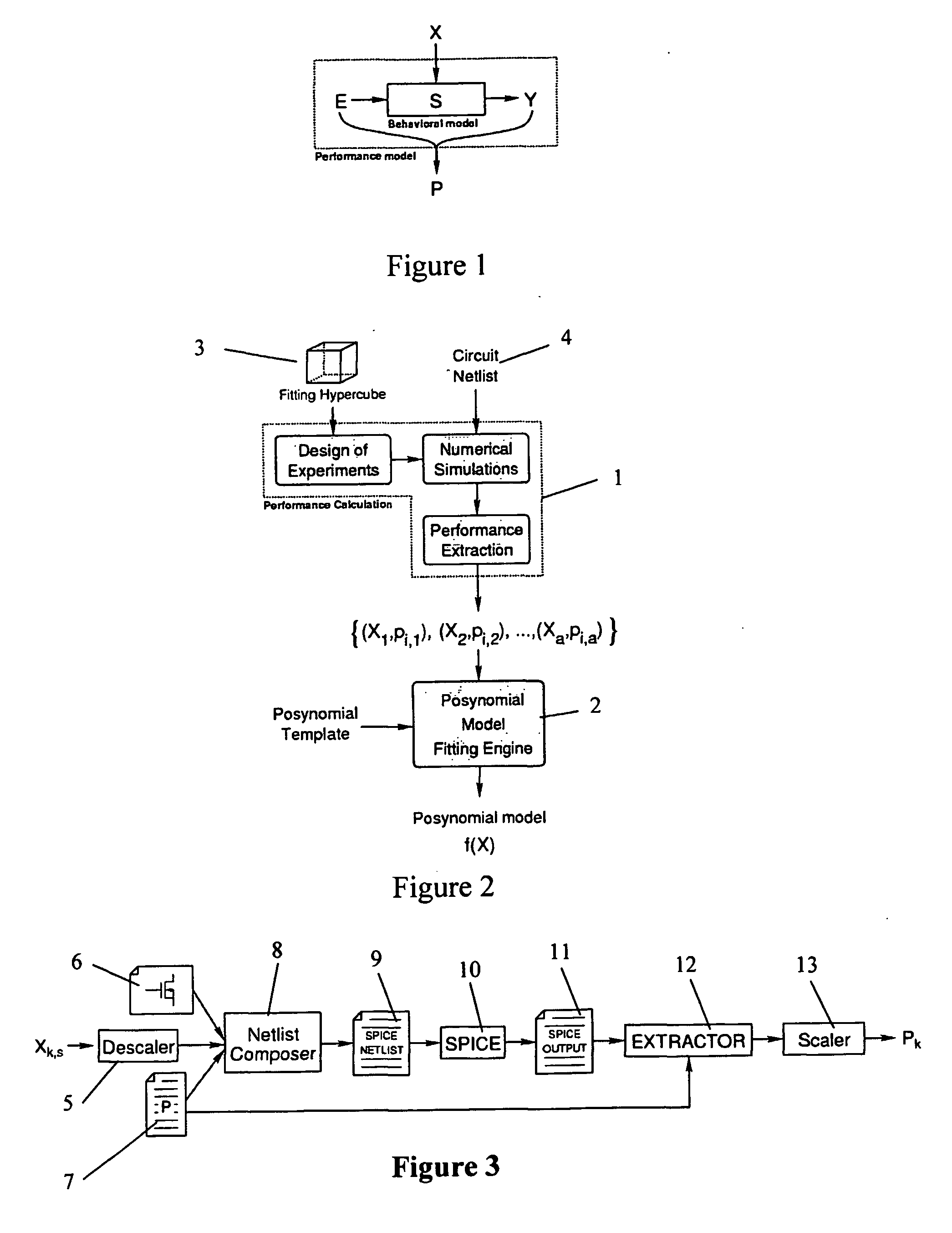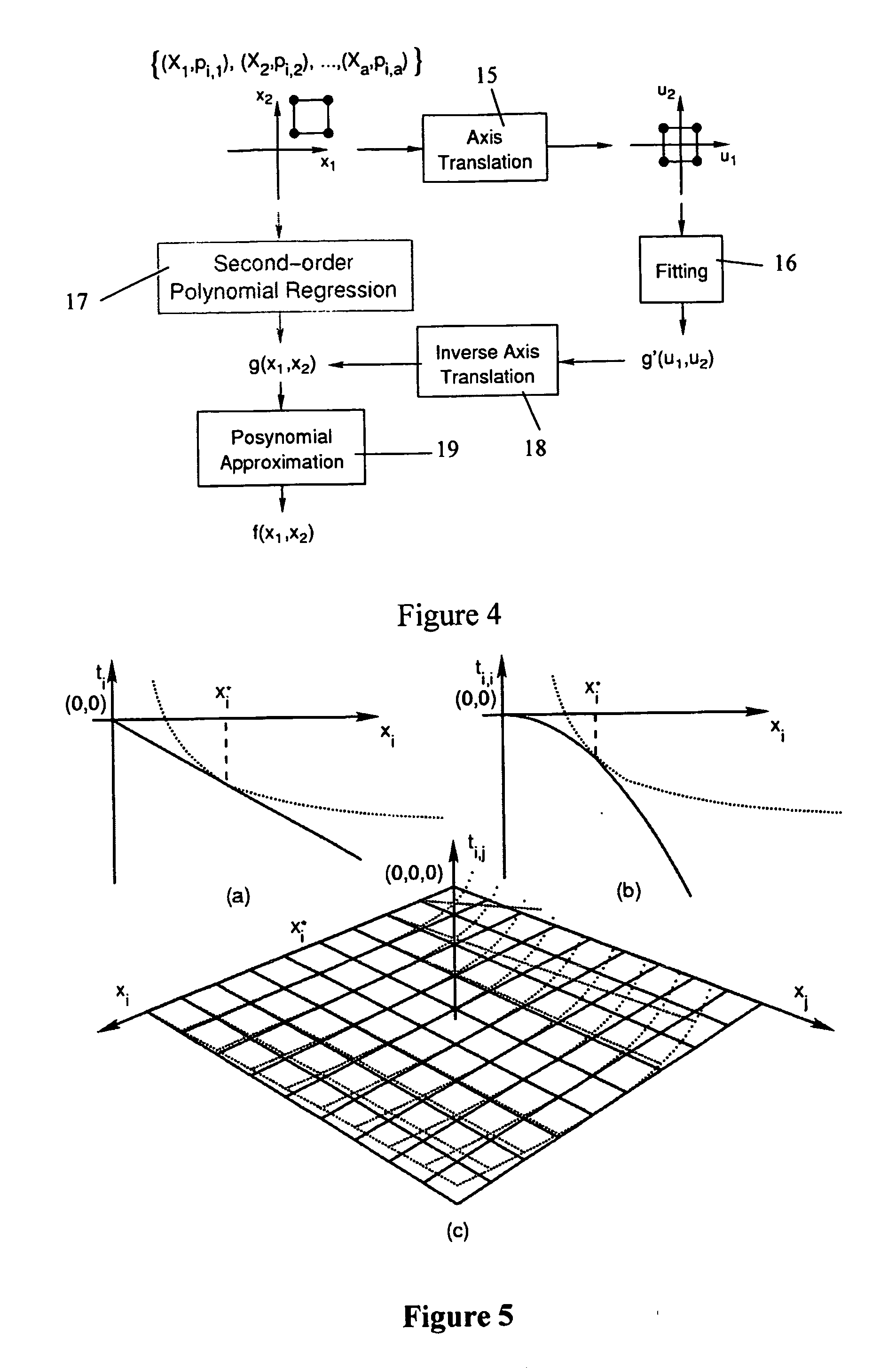Posynomial modeling, sizing, optimization and control of physical and non-physical systems
a technology of physical and non-physical systems and optimization, applied in the field of system modeling, can solve the problems of intractable and difficult application of convex programming, time-consuming and thus expensive steps in the design of electronic circuits, and the approach, which has a number of limitations
- Summary
- Abstract
- Description
- Claims
- Application Information
AI Technical Summary
Benefits of technology
Problems solved by technology
Method used
Image
Examples
second embodiment
Illustrative Example of the Second Embodiment
[0112] Consider again the example system of the above section i.e. a system with 2 inputs x1 and X2 and one output y exhibiting an (supposedly unknown) input output relationship y=h(x1,x2) with
h(x1,x2)=−9(3x1−1)(2.5x2−1)(x2−0.55)(1.3x2−1) (35)
[0113] The graphical representation of this relationship can now be found in FIG. 8. The example sampled data set above is reused, i.e.,
X1x2y0.50.5−0.00984380.60.5−0.02520.40.5−0.0015750.50.60.0123750.50.400.5750.5750.0130640.4250.5750.00187970.5750.425−0.0165390.4250.425−0.0023795
The goal is to fit a posynomial template such as:
ƒ(x1,x2)=c0+c1x1+c-1x1−1+c2x2+c-2x2−1+c1,2x1x2+c-1,2x1−1x2+c1,-2x1x2−1+c1,1x12c2,2x22 (36)
To illustrate the operation of the direct-fitting algorithm of FIG. 7, we will go through the algorithm step by step. The step numbers have been indicated near the line endings of the following description. We omitted the counter initializations for brevity reasons: [0114] {1...
PUM
 Login to View More
Login to View More Abstract
Description
Claims
Application Information
 Login to View More
Login to View More - R&D
- Intellectual Property
- Life Sciences
- Materials
- Tech Scout
- Unparalleled Data Quality
- Higher Quality Content
- 60% Fewer Hallucinations
Browse by: Latest US Patents, China's latest patents, Technical Efficacy Thesaurus, Application Domain, Technology Topic, Popular Technical Reports.
© 2025 PatSnap. All rights reserved.Legal|Privacy policy|Modern Slavery Act Transparency Statement|Sitemap|About US| Contact US: help@patsnap.com



